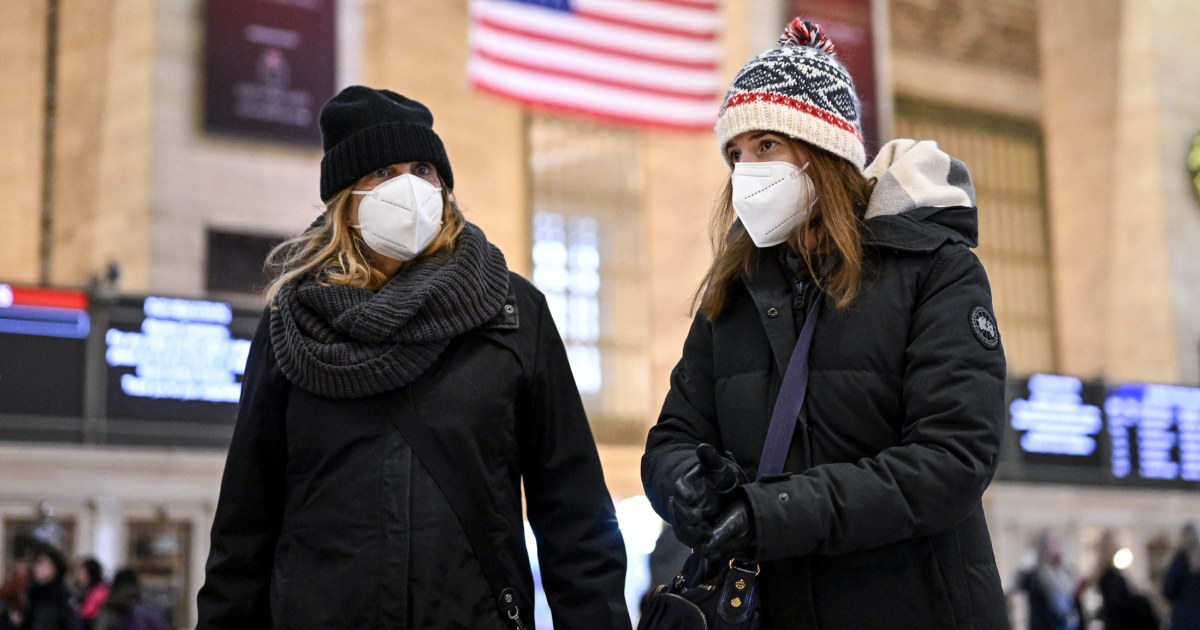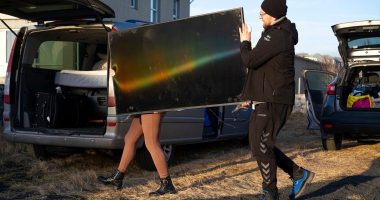
With Covid spreading at high levels in New York and Los Angeles, the Centers for Disease Control and Prevention now recommends that people in those areas wear masks indoors and on public transportation.
The CDC recommendation is based on three metrics: new Covid cases, hospital capacity and hospital admissions. Both New York City and Los Angeles County recorded around 3,200 daily cases on Thursday, and hospital inpatient beds in their respective states are more than 80% full, according to data from the Department of Health and Human Services.
Some cities are also calling for masks in schools in anticipation of cases surging this winter.
The Philadelphia school district announced Wednesday that students and staff will be required to wear masks indoors for two weeks in January in an effort to slow transmission after the holidays. The New York City Department of Education issued a letter this week strongly encouraging students and staff to wear a well-fitting mask indoors. And in Boston, the parent advocacy group BPS Families for Covid Safety is urging the city’s school district to impose a 10-day mask mandate.
The number of people buying masks in the U.S. has also risen over the past month, said Neil Saunders, the managing director for retail at GlobalData, a consulting and research group.
“Much of this was initially related to the increase in travel and gathering around Thanksgiving. However, some of the current increase could be because of rising health concerns around both Covid and the flu,” Saunders said in an email.
After three years of Covid, however, experts recognized that few people are inclined to wear masks as often as they had previously while in public spaces.
“The reality is that most people find masks uncomfortable, so they’re going to choose” when to wear them, said Dr. Stephen Luby, a professor of medicine at Stanford University.
“We’re at a place societally where people don’t feel that the inconvenience of wearing a mask is worth it in terms of the amount of protection they gain, nor in terms of the amount of protection they give more generally to society,” he added.
The effectiveness of masking is relatively unchanged since last December, when the original version of the omicron variant became dominant, said Linsey Marr, a Virginia Tech professor who studies aerosol transmission.
“Masks will work in the same way against omicron and really any other version of SARS-CoV-2 that we’re going to see because the virus is still the same size,” she said.
But as people grow tired of masks, studies examining their effectiveness have stalled, said Laura Kwong, an assistant professor of environmental health sciences at the University of California, Berkeley School of Public Health.
“We don’t have clear studies that evaluate mask efficacy for alpha versus delta versus omicron, and definitely not within the omicron subvariants,” she said.
Marr said KN95 or N95 masks remain the most protective option since they block 95% of viral particles in the air. A CDC study of mask wearers in California last year found that KN95 or N95 masks lowered a person’s odds of testing positive for Covid by 83%, compared with 66% for surgical masks and 56% for cloth masks (though the results for cloth masks weren’t statistically significant).
“Any mask is going to be more protective than no mask, but at this point, if you’re going to bother wearing a mask, you might as well wear a KN95 or an N95,” Marr said.
Disease experts recommended masks even for people who are up-to-date on their Covid vaccines.
By preventing infections, masks can reduce a person’s risk of long Covid, regardless of their vaccination status, said Luby.
Kwong noted that masks also prevent people from spreading Covid to the elderly or immunocompromised. Kwong and Luby’s research in Bangladesh has shown that when 42% of a population wears masks, it can reduce symptomatic Covid in people ages 60 and up by 35%.
Kwong said one trick for deciding when to mask is to consider how close you are to the people around you: “Anywhere where people are breathing, talking, singing and you can reach out and touch someone, that’s a crowded space.”
Marr said it’s reasonable to weigh the benefits of socializing against the risk of getting sick.
“If it’s a holiday party, you get a lot of benefit out of that, socializing with people you know,” she said. “There’s less to be gained from unmasking in the subway.”
But Luby said he still wears a mask in public, even when others around him do not.
“I find myself in that situation a lot — I’m the only person in the room wearing a mask,” he said. “But on the other hand, I know I’m protecting myself and I know I’m protecting my family when I’m doing that, so I’m willing to bear a little bit of social approbation.”
Source: | This article originally belongs to Nbcnews.com










